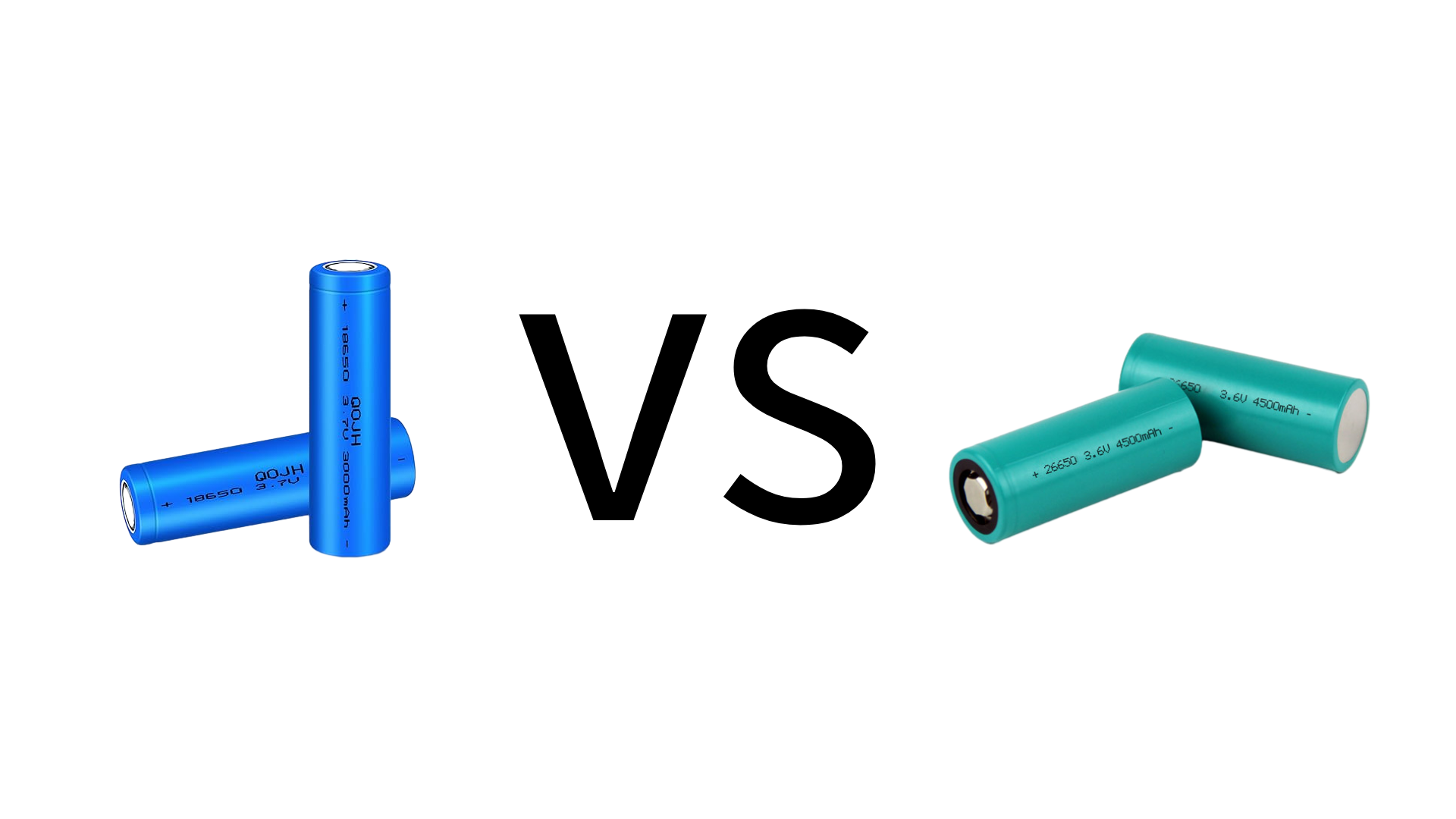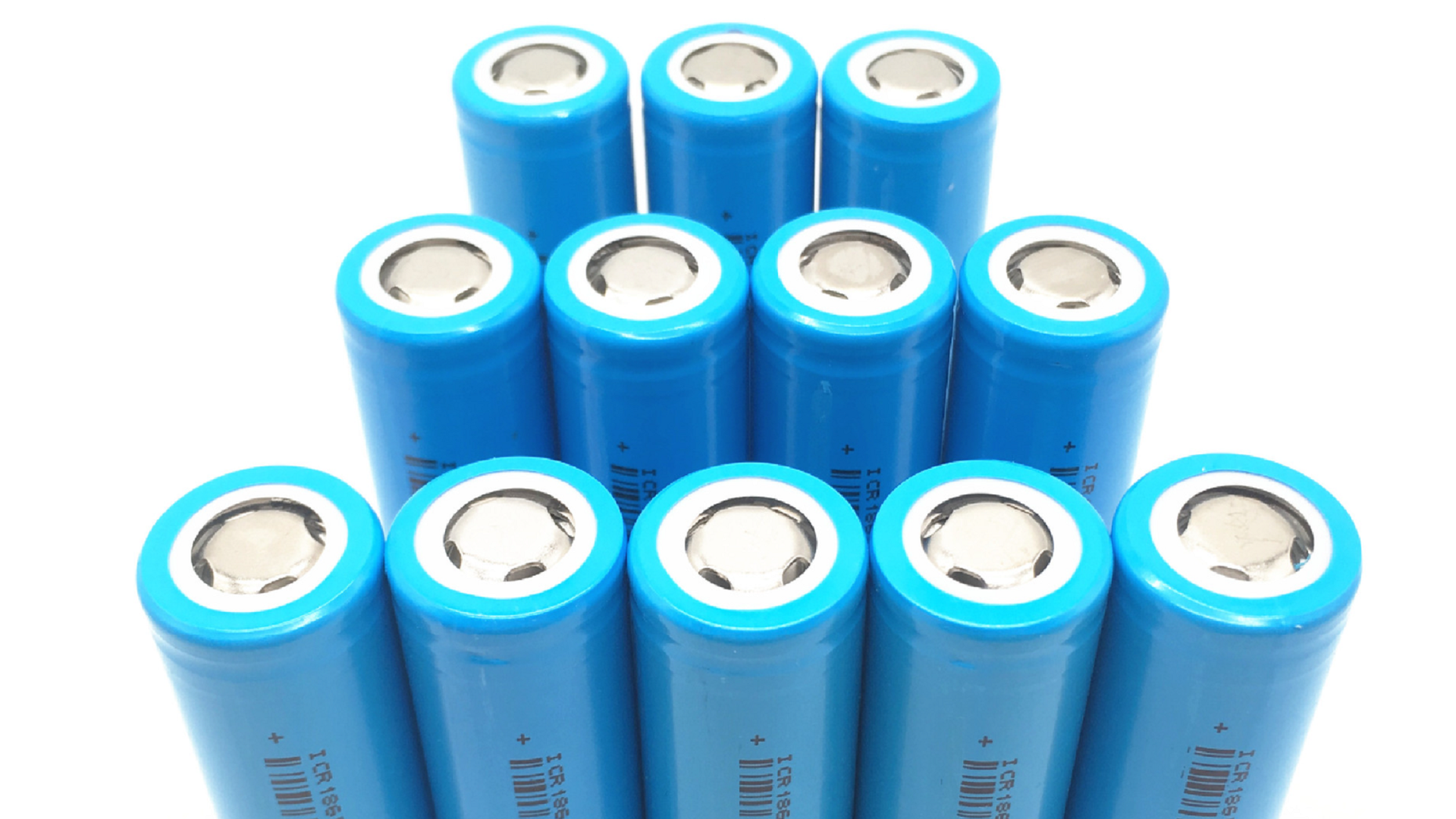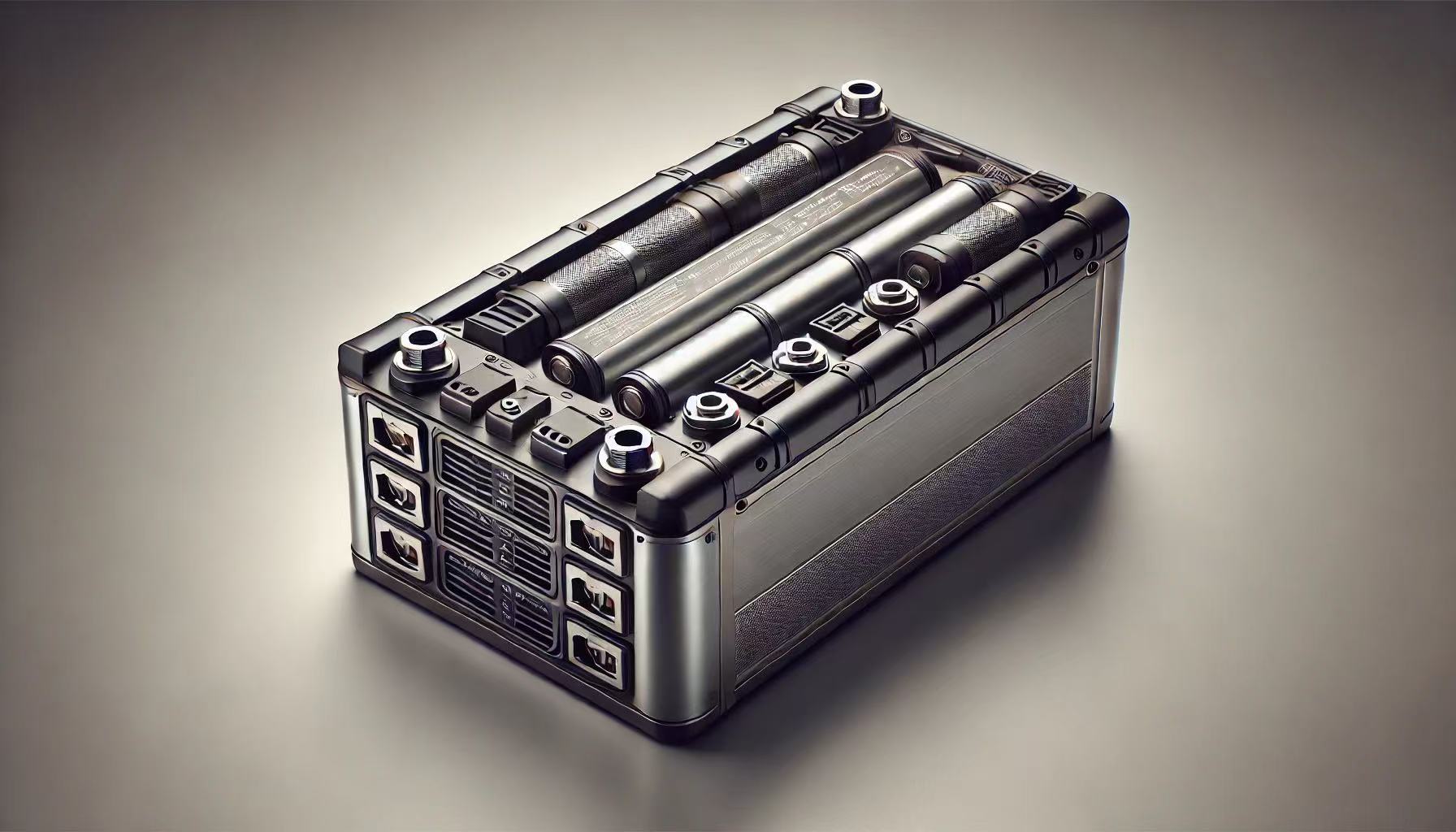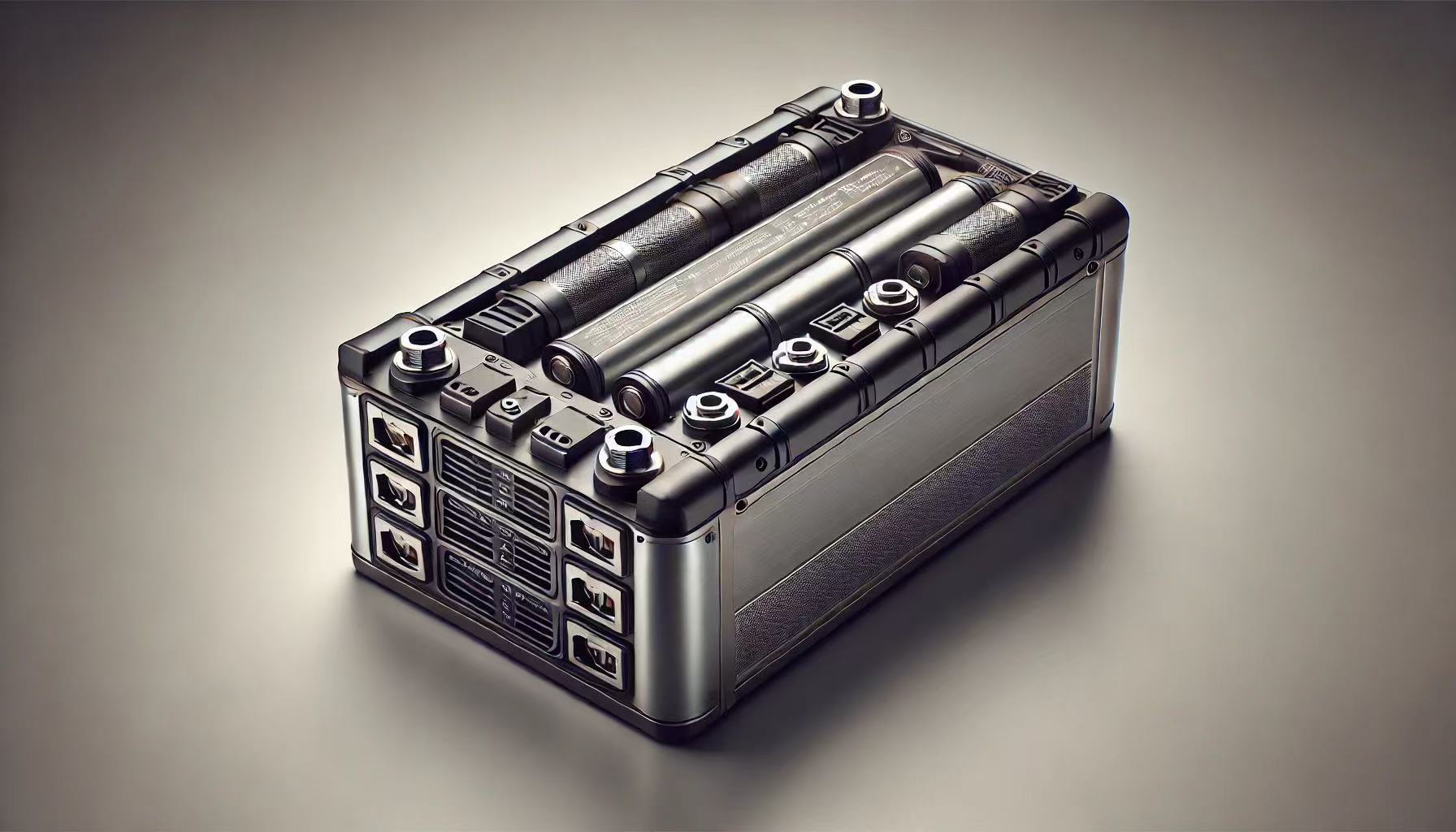
When choosing lithium-ion batteries for high-drain devices like flashlights, vapes, or power banks, two cylindrical cell types dominate the market: the 18650 and the 26650. While both are rechargeable and widely used, their differences in size, capacity, and application make them suited for distinct purposes.
1. Physical Dimensions and Design
The numbers in their names reveal their dimensions:
- 18650: 18mm diameter × 65mm length.
- 26650: 26mm diameter × 65mm length.
Though they share the same length, the 26650’s larger diameter provides more internal space for chemical components. This directly impacts capacity and energy output (discussed below). However, the 18650’s slimmer profile makes it compatible with compact devices like laptops and handheld gadgets, whereas the 26650 is bulkier and often reserved for high-power equipment.
Key Takeaway:
If portability is critical (e.g., everyday carry flashlights), the 18650 wins. For stationary or heavy-duty tools, the 26650’s size is justified.
2. Capacity and Energy Output
Capacity (measured in mAh) and discharge rate (in amps) determine how long a battery lasts and how much power it delivers.
- Capacity:
- A standard 18650 ranges from 2000mAh to 3500mAh.
- A 26650 typically offers 4000mAh to 5500mAh due to its larger size.
- Example: A 26650 with 5000mAh can power a 10W LED flashlight for ~5 hours, while a 3000mAh 18650 lasts ~3 hours.
- Discharge Rate:
- High-drain 18650s (e.g., Sony VTC6) support 15–30A continuous discharge, ideal for vaping or power tools.
- 26650s often provide 20–35A, but their larger surface area improves heat dissipation, enhancing stability during prolonged high-current use.
3. Applications and Compatibility
18650 Use Cases:
- Consumer Electronics: Laptop battery packs (e.g., older MacBooks), cordless tools.
- Portable Devices: LED flashlights, drones, and vaping mods.
- Advantage: Ubiquitous availability; most devices with removable batteries are designed for 18650s.
26650 Use Cases:
- High-Energy Demands: Solar-powered systems, electric bicycles, and industrial flashlights.
- Specialized Equipment: Tactical gear, medical devices, and custom battery packs.
- Advantage: Longer runtime reduces frequent recharging in energy-intensive scenarios.
Practical Tip:
Check your device’s battery compartment size before purchasing. Some 26650-compatible flashlights include adapters for 18650s, but the reverse is rare.
4. Weight and Durability
- Weight: A 26650 weighs ~90g, nearly double an 18650’s ~45g. This matters for handheld devices where ergonomics are crucial.
- Durability: Both types feature robust steel casings, but the 26650’s thicker shell may better withstand physical stress.
5. Price and Availability
- 18650: Mass-produced and widely available. Prices range from 3to10 per unit (e.g., Panasonic NCR18650B).
- 26650: Less common, often priced 8to15 (e.g., Keeppower 26650).
- Note: Avoid ultra-cheap, unbranded batteries—they often lack safety features like overcharge protection.
6. Safety and Longevity
Both batteries use lithium-ion chemistry, but their lifespan and safety depend on usage:
- Cycle Life:
- 18650: 300–500 cycles (if maintained at 20–80% charge).
- 26650: 500–700 cycles due to lower internal stress from larger capacity.
- Safety Risks:
- Poor-quality cells or improper charging can lead to overheating. The 26650’s size allows better thermal management.
- Always use a charger with overcurrent protection.
7. Environmental Impact
- Recycling: Both are recyclable, but 18650s are more commonly processed due to higher consumer use.
- Energy Density: 26650s store more energy per unit, potentially reducing waste in long-term applications.
Which Should You Choose?
Opt for an 18650 if:
- Your device has size constraints.
- You need affordability and easy replacements.
Choose a 26650 if:
- Runtime and high-current performance are priorities.
- Your equipment supports its larger size.
Final Thoughts
The 18650 vs 26650 debate hinges on balancing portability versus power. For everyday gadgets, the 18650 remains king. But as renewable energy systems and high-lumen devices grow, the 26650’s dominance in niche markets will expand. Always prioritize reputable brands (e.g., Samsung, LG, or Acebeam) and match the battery to your device’s specifications.
Pro Tip: For DIY projects, 26650s are ideal for creating custom power banks or solar storage due to their higher capacity.
By understanding these differences, you’ll optimize performance, safety, and cost-effectiveness for any application. Bookmark this guide for your next battery purchase!



